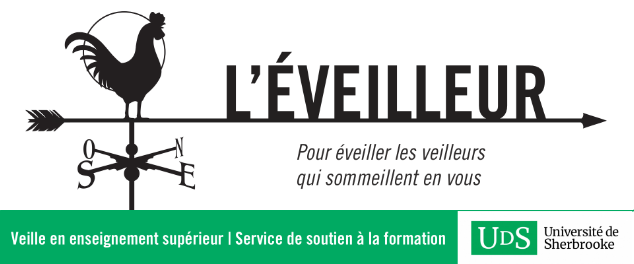Également suggéré par Francis Beauchamp-Goyette, cet article du 16 septembre 2013 provenant du blogue personnel de Reid Hoffman, patron de LinkedIn, où il présente sa vision du diplôme du 21e siècle. Dans une dépêche récente, j’évoquais le fait que LinkedIn pourrait se tourner vers la certification après la formation et le recrutement universitaire.
Hoffman commence par présenter le diplôme comme une technologie de communication désuète puisqu’elle est difficile à mettre à jour ou à partager, voire à filtrer en grande quantité. La solution: la rendre numérique et la mettre en réseau:
“In the same way that trailblazers like Coursera and Udacity are making instruction faster, cheaper, and more effective, we should also make certification faster, cheaper, and more effective too.
To do this, we need to apply new technologies to the primary tool of traditional certification, the diploma. We need to take what now exists as a dumb, static document and turn it into a richer, updateable, more connected record of a person’s skills, expertise, and experience. And then we need to take that record and make it part of a fully networked certification platform.” (Hoffman, 2013)
M. Hoffman ne fait aucun mystère quant à ses intentions:
“Imagine an online document that’s iterative like a LinkedIn profile (and might even be part of the LinkedIn profile), but is administered by some master service that verifies the authenticity of its components. While you’d be the creator and primary keeper of this profile, you wouldn’t actually be able to add certifications yourself. Instead, this master service would do so, verifying information with the certification issuers, at your request, after you successfully completed a given curriculum.
Over time, this dynamic, networked diploma will contain an increasing number of icons or badges symbolizing specific certifications. It could also link to transcripts, test scores, and work examples from these curricula, and even evaluations from instructors, classmates, internship supervisors, and others who have interacted with you in your educational pursuits.” (Hoffman, 2013)
Et si ce n’était pas assez clair, à la fin du texte Hoffman suggère que c’est à l’entreprise privée de jouer le rôle de mettre à jour le diplôme…
“Making this transition won’t happen overnight. But if we truly want to use technology to transform higher education, we can’t just confine our efforts to transforming instruction. We have to transform certification too. In doing so, we have an opportunity to create a new system that makes it clear to students what skills are most relevant and in highest demand, and thus gives them a chance to pursue these skills more strategically.
But our higher education system can’t implement such changes alone. The business world has to embrace certification-as-a-platform, too. As long as it continues to depend on a 12 century communications device, the diploma, as its preferred gateway to entry, we won’t be able to fully capitalize on 21 century innovations in technology and education.” (Hoffman, 2013)
Les universités ont intérêt à s’intéresser à ce changement de technologie avant que d’autres le fassent pour elles…
Source: Hoffman, Reid, “Disrupting the Diploma“, (blogue personnel), 16 septembre 2013





